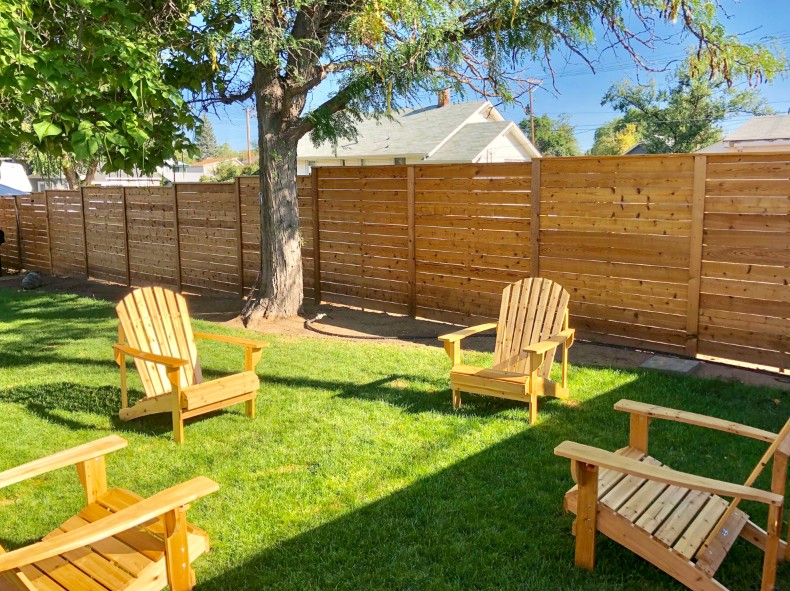
Wood fencing remains one of the most popular choices for homeowners due to its natural beauty, durability, and versatility. Whether you’re looking for privacy, security, or simply enhancing your property’s curb appeal, wood fencing offers a variety of styles and designs to suit every need. In this guide, we’ll explore the different types of wood fencing, their benefits, and how to choose the right style for your home.
Why Choose Wood Fencing?
Wood fencing has been a timeless option for properties for several reasons:
- Aesthetic Appeal:Wood offers a classic, natural look that complements any landscape.
- Customization:It can be painted, stained, or left untreated for a rustic appearance.
- Durability:High-quality wood like cedar, redwood, and pressure-treated pine can last for decades with proper maintenance.
- Versatility:Wood can be used for various fencing styles, from privacy fences to decorative picket designs.
Popular Wood Fencing Styles
- Privacy Fence
A privacy fence is one of the most common wood fencing styles, designed to block visibility and reduce noise.
- Height:Typically 6 to 8 feet tall.
- Design:Uses tightly spaced vertical boards (like stockade or board-on-board styles).
- Best Wood Types:Cedar, redwood, or pressure-treated pine for longevity.
- Picket Fence
The classic picket fence is a charming, low-profile option perfect for front yards.
- Height:Usually 3 to 4 feet tall.
- Design:Features evenly spaced vertical boards with pointed or rounded tops.
- Best Wood Types:Pine or cedar, often painted white for a traditional look.
- Split Rail Fence
A split rail fence is a rustic, open design ideal for large properties and rural settings.
- Height:Around 3 to 4 feet tall.
- Design:Uses horizontal wooden rails fitted into vertical posts, often in a zigzag or straight pattern.
- Best Wood Types:Cedar or pressure-treated pine for weather resistance.
- Lattice Fence
A lattice fence adds a decorative touch while allowing light and air to pass through.
- Height:Varies (often used as a top panel for privacy fences).
- Design:Crisscrossed wooden strips create a diamond or square pattern.
- Best Wood Types:Cedar or redwood to prevent warping.
- Shadow Box Fence
A shadow box fence offers privacy while allowing airflow, making it ideal for windy areas.
- Height:Typically 6 feet tall.
- Design:Alternating boards on both sides of the fence rails create a semi-private effect.
- Best Wood Types:Cedar or pressure-treated pine.
- Post and Rail Fence
A post and rail fence is simple and functional, often used for pastures and large properties.
- Height:3 to 5 feet tall.
- Design:Features horizontal rails secured between vertical posts (usually 2-3 rails).
- Best Wood Types:Oak or pressure-treated pine for durability.
Choosing the Right Wood for Your Fence
The type of wood you choose affects your fence’s longevity and maintenance needs.
- Cedar:Naturally resistant to rot and insects; ideal for humid climates.
- Redwood:Highly durable and aesthetically pleasing but more expensive.
- Pressure-Treated Pine:Affordable and treated to resist decay and pests.
- Spruce or Fir:Budget-friendly but requires regular sealing to prevent damage.
Maintaining Your Wood Fencing
To extend the life of your wood fencing, follow these maintenance tips:
- Stain or Seal:Apply a protective sealant every 2-3 years to prevent moisture damage.
- Regular Cleaning:Wash with mild soap and water to remove dirt and mildew.
- Inspect for Damage:Check for loose boards, rot, or insect infestations annually.
- Repair Promptly:Replace damaged sections to maintain structural integrity.
Conclusion
Wood fencing offers a perfect blend of functionality and aesthetic appeal, making it a top choice for homeowners. Whether you prefer the privacy of a board-on-board fence, the charm of a picket fence, or the rustic look of a split rail fence, there’s a wood fencing style to match your needs. By selecting the right wood type and maintaining it properly, your fence can last for years while enhancing your property’s beauty and value.